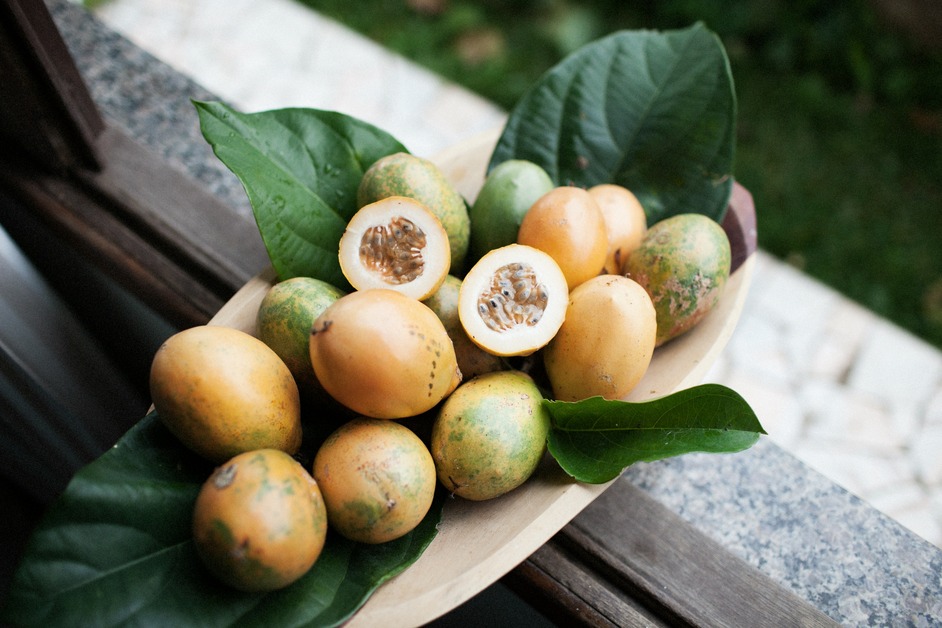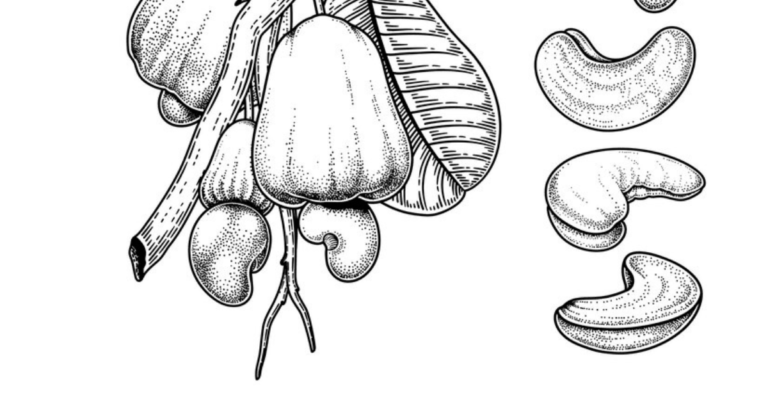Žižole: The Forgotten Superfruit with Remarkable Health Benefits and Cultural Roots
Žižole, known in English as jujube or red date, is an ancient fruit with roots stretching back over 4,000 years. Despite its modest appearance, this small, reddish-brown fruit harbors a wealth of nutritional, medicinal, and cultural value. Commonly found in parts of Asia, the Middle East, and Eastern Europe, žižole is now gaining recognition globally for its antioxidant properties, adaptogenic benefits, and role in traditional healing systems.
This article provides a comprehensive, updated look at žižole, including its origin, botanical profile, health benefits, traditional and modern applications, and culinary versatility. Whether you’re a health-conscious individual, herbalist, or simply curious about ancient superfoods, this guide will introduce you to everything you need to know about žižole.
1. What is Žižole?
Žižole (pronounced “zhee-zho-leh”) is the Slavic name for jujube, a small, round to oval fruit with a thin, edible skin and a sweet, apple-like flesh. Scientifically named Ziziphus jujuba, it belongs to the Rhamnaceae family and grows primarily in warm-temperate to subtropical regions.
While it’s commonly referred to as a date due to its appearance when dried, žižole is not botanically related to dates. Instead, it shares more characteristics with plums and cherries, particularly in its stone-like pit and drupe structure.
2. Origins and Historical Significance
The history of žižole stretches back millennia. It originated in southern Asia, particularly China and India, and was later spread via trade routes to the Middle East and Europe. By 1000 BCE, žižole had already established itself in Greek and Roman medicinal texts.
In ancient Chinese medicine, it was considered a tonic herb, frequently prescribed to improve sleep, digestion, and emotional balance. Roman naturalist Pliny the Elder even wrote about the fruit’s benefits in his encyclopedic work Natural History.
The fruit also made appearances in religious rituals, imperial feasts, and traditional wedding ceremonies, signifying abundance and health.
3. Botanical Profile and Cultivation
Žižole trees are hardy, drought-resistant, and can tolerate poor soils, making them ideal for arid and semi-arid regions.
| Characteristic | Description |
|---|---|
| Scientific Name | Ziziphus jujuba |
| Common Names | Žižole, Jujube, Chinese date, Red date |
| Family | Rhamnaceae |
| Height | 5 to 12 meters |
| Climate | Warm, dry; tolerant to drought |
| Soil Requirements | Well-drained, loamy or sandy soil |
| Lifespan | 50+ years |
| Pollination | Mostly self-pollinating |
| Harvest Season | Late summer to early fall |
Žižole is cultivated using grafting or budding, and it takes about 2–3 years to begin fruiting. The tree requires minimal maintenance, making it a sustainable choice for small-scale and organic farmers.
4. Nutritional Composition
Žižole is a nutrient-dense fruit, rich in micronutrients, fiber, and unique bioactive compounds.
| Nutrient (per 100g dried) | Amount |
|---|---|
| Calories | 280 kcal |
| Carbohydrates | 72 g |
| Protein | 4 g |
| Fat | 0.5 g |
| Fiber | 6 g |
| Vitamin C | 69 mg (over 100% DV) |
| Potassium | 250 mg |
| Iron | 1.8 mg |
| Flavonoids & Saponins | Present in high concentration |
Its antioxidant and anti-inflammatory properties stem largely from these phytonutrients. Vitamin C in žižole far exceeds that in apples or pears, making it a potent immune-boosting snack.
5. Medicinal Benefits
Modern nutritionists and herbalists recognize žižole for a broad range of evidence-backed health benefits:
1. Boosts Immunity:
Thanks to its high vitamin C and flavonoid content, žižole enhances the body’s natural defenses.
2. Supports Digestive Health:
Its fiber content helps regulate bowel movements and promotes a healthy gut microbiome.
3. Improves Sleep Quality:
Saponins in žižole have mild sedative effects, helping those with insomnia or restlessness.
4. Reduces Stress and Anxiety:
Žižole acts as a natural adaptogen, helping the body adapt to physical and emotional stress.
5. Supports Heart Health:
Potassium and antioxidants contribute to blood pressure regulation and protect against arterial damage.
6. Regulates Blood Sugar:
Despite its sweetness, žižole has a low glycemic index and may help stabilize blood sugar levels.
6. Žižole in Traditional Medicine
In Traditional Chinese Medicine (TCM), žižole is known as “da zao” and classified as a warming, tonifying herb that nourishes qi (life force). It is often included in decoctions to:
- Tonify the spleen and stomach
- Calm the spirit
- Harmonize other herbs
In Ayurveda, it is used to pacify vata dosha and treat fatigue, weakness, and anxiety.
In Balkan and Middle Eastern folk traditions, žižole tea or syrup is a common home remedy for colds, asthma, and inflammation.
7. Scientific Perspective and Recent Studies
Emerging research confirms many of žižole’s traditional uses. Recent findings show:
- Neuroprotective properties: A 2022 study indicated that jujube extract protects neurons from oxidative damage.
- Anti-cancer potential: Flavonoids in žižole have shown apoptosis-inducing effects in cancer cell cultures.
- Sleep aid: Controlled trials found significant improvements in sleep latency and duration in subjects consuming jujube extract.
Despite these advances, more large-scale clinical trials are needed to fully establish dosage guidelines and long-term effects.
8. Modern Uses in Wellness and Skincare
Žižole is finding its way into modern wellness trends and skincare innovations, especially in Asia and wellness-conscious Western markets.
- Capsules and tinctures: Popular among herbalists for managing anxiety and fatigue.
- Skincare serums: Rich in antioxidants, žižole extract is used in anti-aging and hydrating products.
- Adaptogen blends: Combined with ashwagandha or reishi for stress relief.
Functional food brands are also introducing žižole into energy bars, smoothies, and herbal teas, highlighting its natural sweetness and health perks.
9. Culinary Uses and Recipes
Žižole’s flavor is mildly sweet, with a texture that transitions from crisp and apple-like when fresh to chewy and date-like when dried.
Culinary Ideas:
- Fresh: Eat raw like apples or add to salads for a sweet crunch.
- Dried: Snack on like dates or use in trail mixes.
- Tea: Simmer with ginger and cinnamon for a calming brew.
- Baking: Substitute for raisins or dates in cookies and breads.
- Syrup: Cook down into a sweet elixir for pancakes or yogurt.
Žižole Herbal Tea Recipe:
Ingredients:
– 10 dried žižole
– 1 tsp fresh ginger
– 2 cups water
– Optional: honey or lemon
Instructions:
Simmer all ingredients for 20 minutes. Strain and enjoy hot or chilled.
10. Žižole in Different Cultures
| Region | Name Variations | Cultural Usage |
|---|---|---|
| China | Da Zao | TCM tonic, festival food |
| India | Ber, Badari | Ayurvedic medicine, rural snacks |
| Middle East | Sidr | Prophetic medicine, honey production |
| Balkans | Žižole | Home remedy, seasonal food |
| Korea | Daechu | Teas, desserts, traditional health foods |
| Iran | Anab | Dried in winter, brewed into infusions |
Žižole’s global footprint is proof of its cross-cultural versatility, revered in both medicinal and culinary traditions.
11. Sustainability and Environmental Benefits
Žižole cultivation aligns with sustainable agricultural practices:
- Drought-resistant: Needs minimal irrigation.
- Pest-resilient: Reduces need for chemical pesticides.
- Supports biodiversity: Attracts pollinators and improves soil health.
- Longevity: Trees live for decades, reducing replanting needs.
In regions facing climate change-related challenges, žižole may become a viable crop for food security and reforestation.
12. Buying, Storing, and Preserving
Where to Buy:
- Health food stores
- Traditional herbal shops
- Online wellness marketplaces
Storage Tips:
- Fresh žižole: Store in fridge for up to 2 weeks.
- Dried žižole: Keep in airtight containers away from moisture.
Preservation Methods:
- Drying: Naturally sun-dried or dehydrated.
- Fermentation: Used to make herbal vinegars or tonics.
- Candying: In honey or sugar for long shelf-life treats.
13. Risks and Considerations
While generally safe, certain precautions are recommended:
- Allergies: Rare but possible; test in small quantities.
- Medication interactions: Consult with a doctor if taking sedatives or blood pressure meds.
- Pregnancy: Traditionally considered safe, but always confirm with healthcare provider.
Like all herbal products, moderation and sourcing from reputable suppliers are key to safety.
14. Future of Žižole in Global Markets
As wellness trends shift toward functional foods and plant-based nutrition, žižole is positioned to make a strong entry into global markets. Entrepreneurs and herbal companies are tapping into:
- Žižole energy snacks
- Adaptogen lattes
- Natural sleep aids
- Fermented tonics
There is also rising academic interest in studying žižole’s full pharmacological potential, suggesting it may one day become a staple in nutraceuticals and personalized health plans.
15. Final Thoughts
Žižole may be an ancient fruit, but its relevance today is stronger than ever. From boosting immunity to promoting restful sleep and supporting gut health, its benefits cover the full spectrum of holistic wellness. It’s more than just a fruit; it’s a bridge between generations of herbal wisdom and modern nutritional science.
For those seeking a natural, time-tested addition to their diet or wellness routine, žižole offers a sweet, sustainable, and scientifically promising choice. Whether eaten fresh, brewed as tea, or taken in supplement form, this remarkable fruit deserves its place on the global stage.




